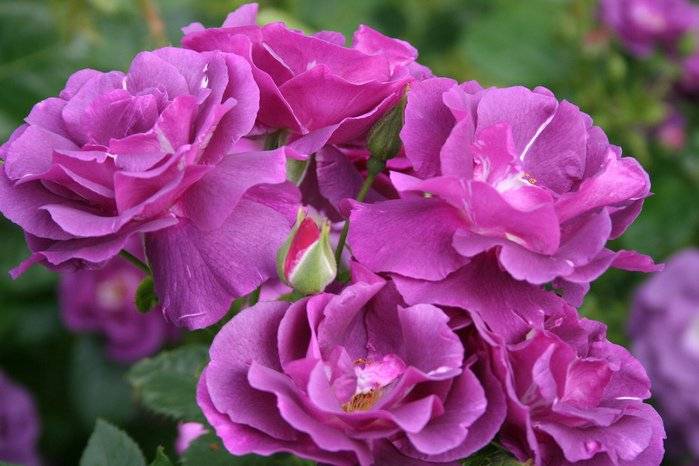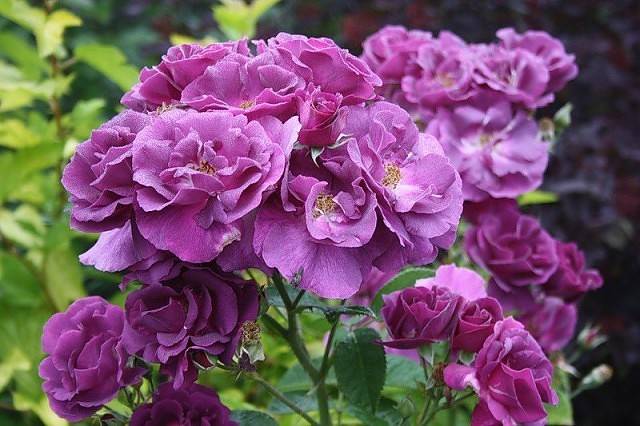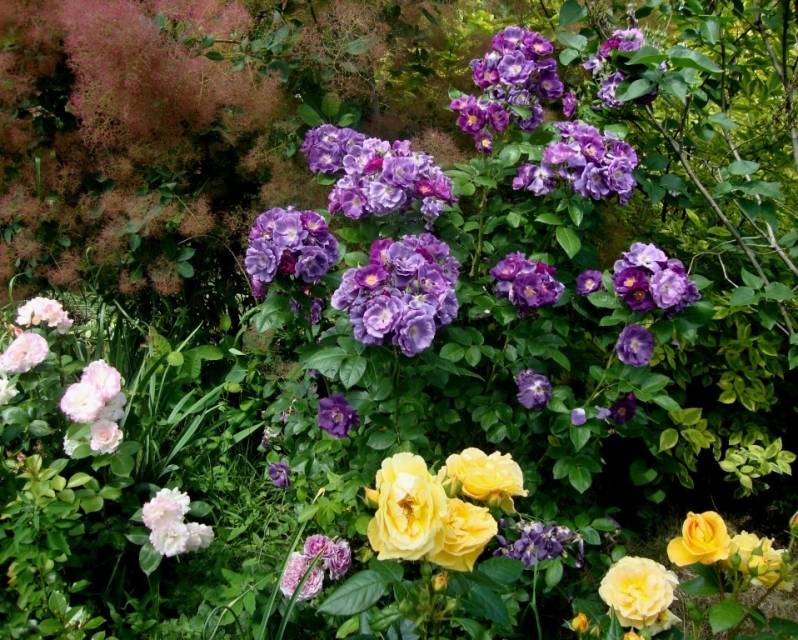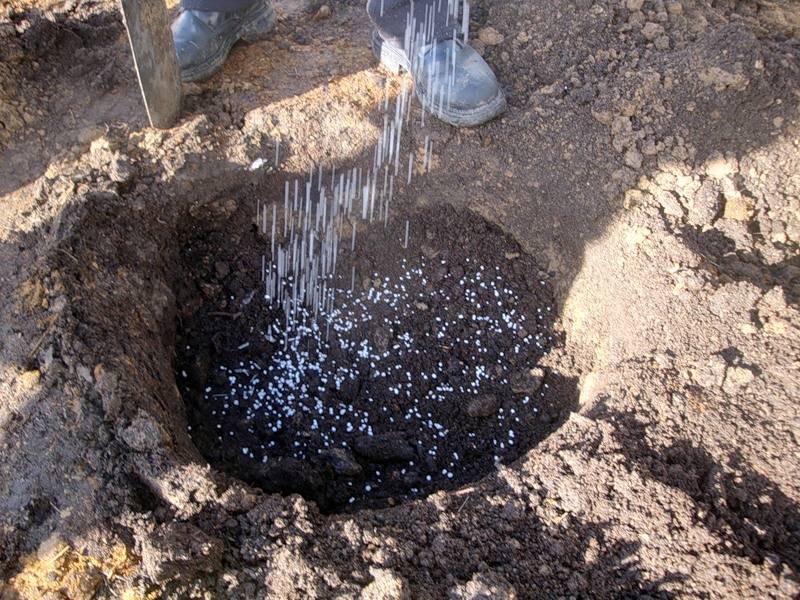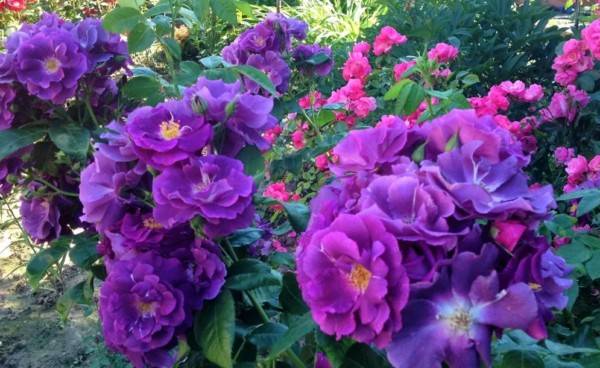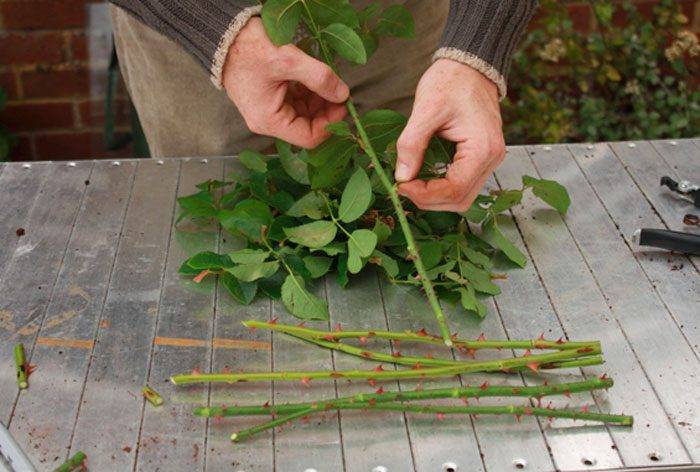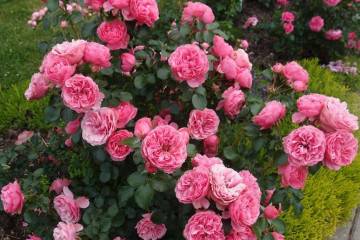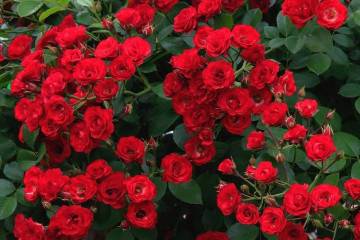Rose Rhapsody in Blue - description of the shraba variety
Content:
Rosa Rhapsody in Blue is a rather difficult variety to grow, but all the efforts made will be worth the result. The rose is incredibly beautiful and unusual.
Rose Rhapsody in Blue - what is this variety, history of creation
Ying Blue is a rose scrub. It is a sprawling shrub with lush flowering. The variety was bred in 1999. The varieties Summer Wine, Violacea, Montezuma, Blue Moon, International Herald Tribune took part in the selection.
The rose was originally named Fantasia. The flower was presented to the general public only in 2002 under the name Rhapsody in Blue rose. The name was given to the variety in honor of the best work of the composer George Gershwin "Rhapsody in the Blues style".
The description of the Rhapsody rose confirms how unusual this variety is:
- bush from 150 cm high, up to 70 cm wide;
- flowers with a diameter of 5-6 cm, the shape of the bud is conical, when blooming, it has the shape of a bowl;
- stamens of a golden hue;
- each flower is composed of 20-30 petals;
- the number of buds on the stem - 3-5;
- color - varying from light purple to blue.
Advantages and disadvantages of the variety
Rose Blue Rhapsody, despite some difficulties in its cultivation, is still a rather unpretentious variety, which is loved by gardeners for a number of advantages:
- unique, incomparable color of the buds;
- relative unpretentiousness in care;
- rapid development of the bush;
- resistance to heavy and prolonged rainfall;
- pleasant, delicate aroma;
- high immunity to many diseases of rose bushes.
The variety is not devoid of some shortcomings. These include the rapid flying around the petals and changing their color when they burn out in the sun.
Use in landscape design
Rose English Rhapsody is a unique variety that will decorate any garden or summer cottage with its presence. Lush bushes are planted in rose gardens and mixborders, on alpine slides and near verandas. Loved by designers with
Rhapsodies to organize arches and gazebos ..
Growing a flower in the open field
Rhapsody in Blue rose is easy to plant. It is important to choose the right place for the bushes and choose high-quality planting material.
Planting a new bush is carried out only by seedlings with 2-3 slightly stiff shoots and a well-developed, undamaged root system. It is recommended to plant seedlings in September or early October, but not less than a month before the onset of frost.
The rose prefers slightly shaded areas, but there should be abundant, diffused lighting for most of the day.You need to beware of direct sunlight hitting the rose, otherwise the petals will fade. There should be no constant draft and strong wind on the site.
How to prepare the soil and flower for planting
It is necessary to add a mixture of sifted river sand and compost to the ground on the site selected for planting. You can additionally feed the soil with superphosphate. Its optimal amount for one hole is 40 g.
If the soil is sandy, a mixture of clay and humus is introduced into it in a 1: 1 ratio. You can make your own formula. The following ingredients are taken in equal parts:
- garden land;
- sand;
- peat;
- humus;
- clay;
- a handful of bone meal;
- a handful of superphosphate.
In the purchased seedling, it is necessary to straighten the root system and trim the roots a little.
The day before planting, the planting material is placed in a growth stimulator solution.
Planting procedure step by step
The recommended size of the holes is 50x30 cm.If several bushes are planted nearby, the distance between them should be at least 1 m.
Planting bushes is performed in the following sequence:
- You need to pour water into the dug hole.
- When the water is absorbed, add a nutrient medium mixed with superphosphate.
- Place the seedling in the hole.
- Cover the root system with earth, which is then well compacted.
- After planting, water the bush abundantly and mulch the soil.
Peat, sawdust or humus are used as mulch.
Plant care
Although the park variety of roses is considered quite unpretentious, it needs to create the right conditions for development and lush flowering. The rose needs abundant watering. In summer, at least 10 liters of water must be poured under each bush. Watering is done once a week in mild summer temperatures. In strong heat, the frequency of watering increases up to 2 times per week.
The rose needs increased soil moisture during its flowering period. In autumn, especially during the period of regular rains, the amount of watering decreases.
Top dressing and soil quality
During the period of active growth, nitrogen fertilizers are applied, they can be replaced with a mullein. This must be done twice a season. At the end of summer, potash and phosphorus feeds are used. Before fertilizing, you must first make several grooves around the bush, pour water into them. When the soil absorbs the liquid, pour the diluted fertilizer, fill the grooves with earth.
Pruning a rose
Bushes are pruned twice a year, in summer and spring. Formative pruning is carried out in the spring. Excess branches should be removed only after the final onset of warm weather.
Bad, damaged shoots, branches that have not survived the winter and have turned black or dried out are subject to removal.
You need to cut off the tops, up to 5 strong, healthy shoots are left on each bush.
After removing the branches, the places of the cuts must be treated with a garden broth to protect the flower from diseases and pests.
Features of wintering a flower
Although Rhapsody is considered a hardy variety, it needs to be covered for the winter. In particular, bushes up to 3 years old need protection.
Before building a shelter, the rose must be cut, all leaves and wilted buds must be removed from the branches, and hilling must be carried out. Spruce branches, agrofibre, oak leaves are used to protect the bushes. When using agrofibre, a frame must be built around the rose.
Blooming rose
Flowering at Rhapsody is long and abundant. Inflorescences are small, up to 6 cm in diameter. The rose blooms in June, flowering lasts until autumn.There may be a slight, almost imperceptible break between the waves of bud appearance.
During activity, the rose needs to be provided with abundant watering and feeding with potash and phosphorus fertilizers.
What to do if it does not bloom
Common reasons for not blooming:
- nutrient-poor soil;
- illness;
- insufficient or excessive watering;
- poor quality or vice versa, too low pruning of bushes.
To restore flowering, it is necessary to correct the care of the rose.
Flower propagation
Breeding is carried out by cuttings or layering.
Cutting is done as follows:
- woody, the strongest shoots are cut off;
- they are cut into cuttings 10-15 cm long each, each cuttings should have 2 buds;
- cuttings are placed in water with a growth stimulant:
- after the appearance of the roots, it can be planted in the ground.
It is quite easy to propagate the rose by layering. For this you need:
- bend the young shoot to the ground and fix it with a bracket;
- cover with soil;
- when the roots appear, cut off from the mother bush and transplant to a new place.
The seed method is practically not used. It is very complex and rarely gives the desired result.
Pests, diseases and how to deal with them
The rose is resistant to diseases. But due to improper care, rust, powdery mildew or gray rot can occur. Treatment - removal of damaged parts and treatment of bushes with Bordeaux liquid. Of the pests, aphids or spider mites can attack. Soap solution or insecticides are used to combat them.
Rhapsody rose is beautiful and unusual, with purple petals. In growing, a relatively unpretentious plant that does not require the creation of specific conditions.
